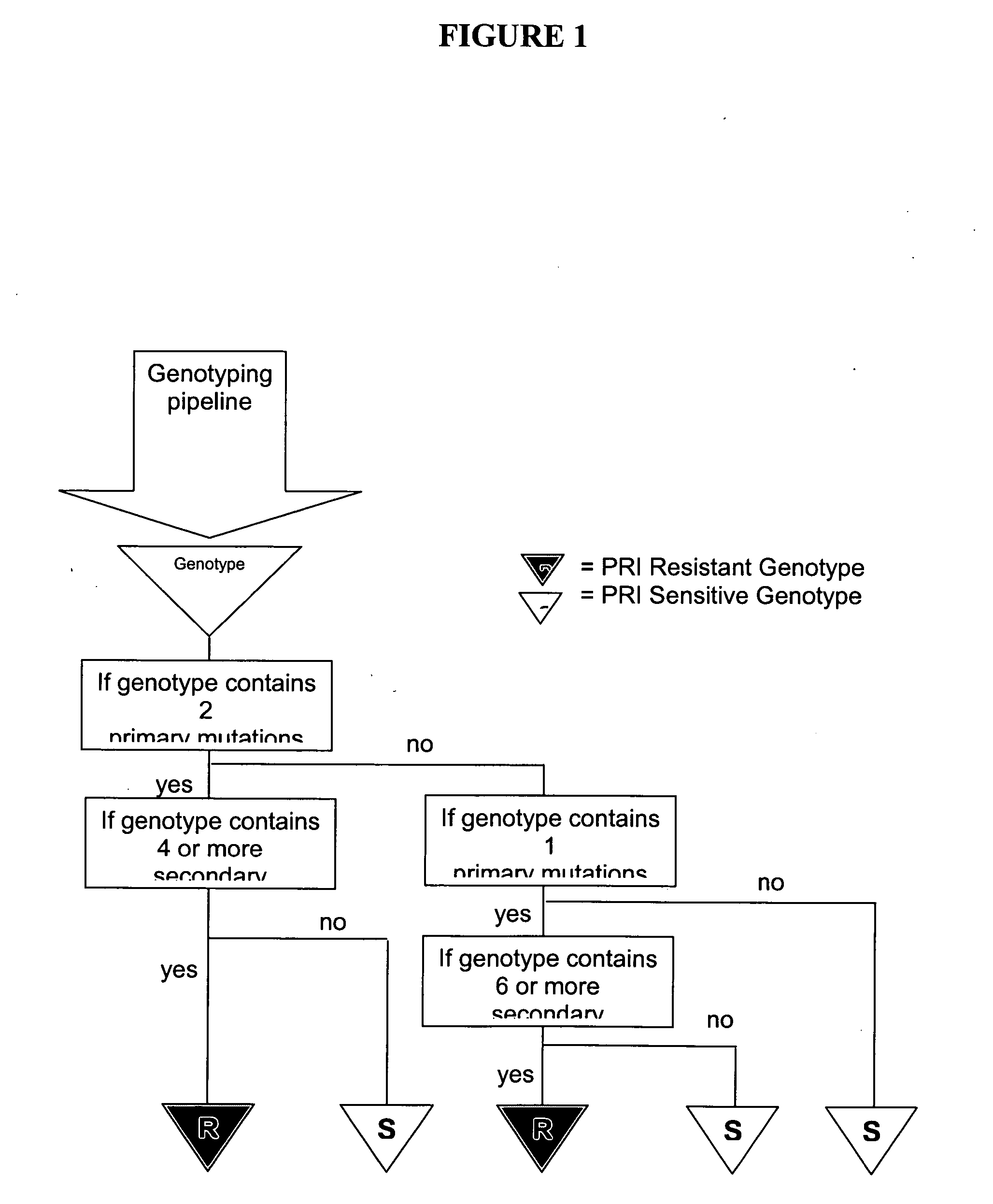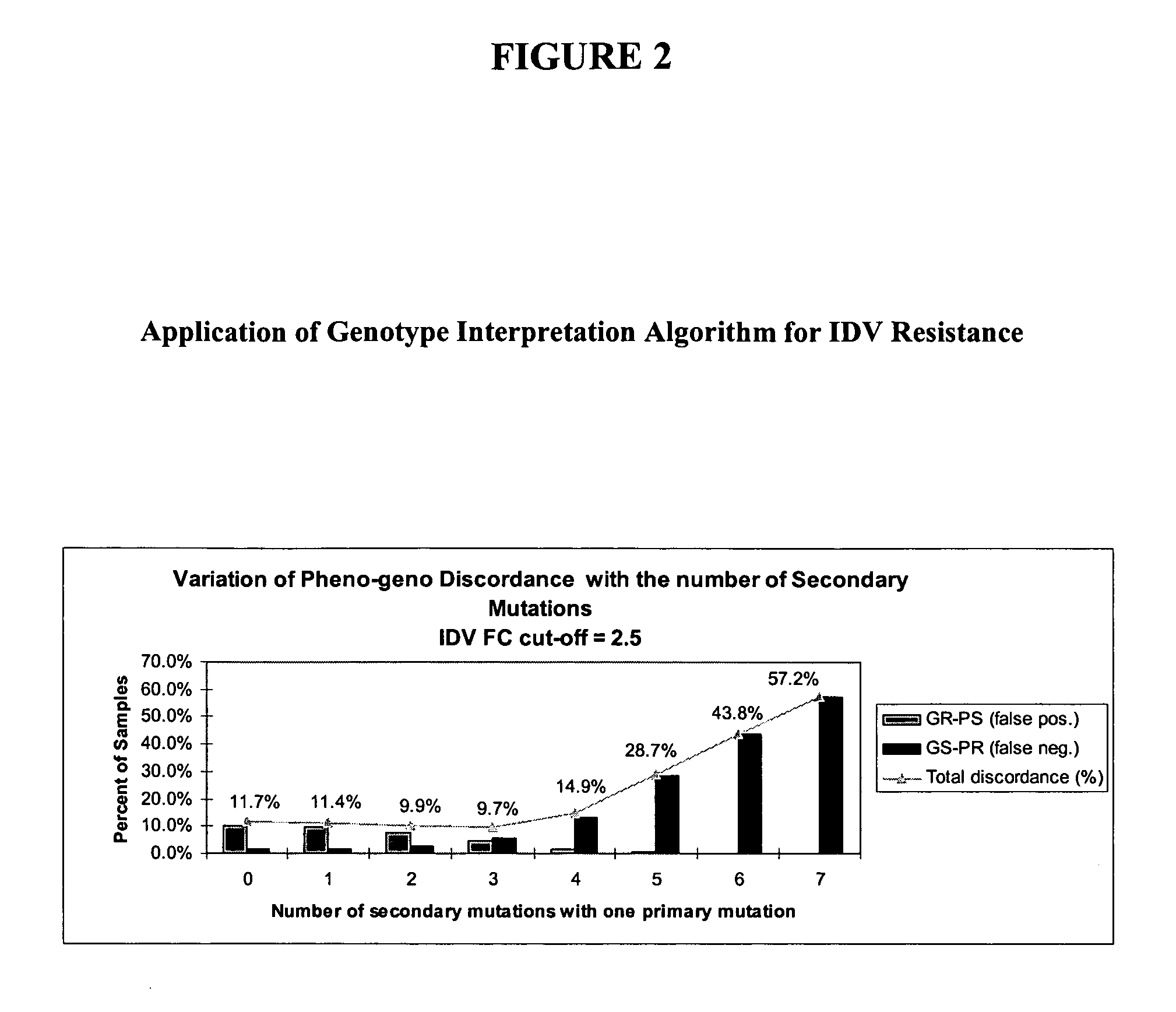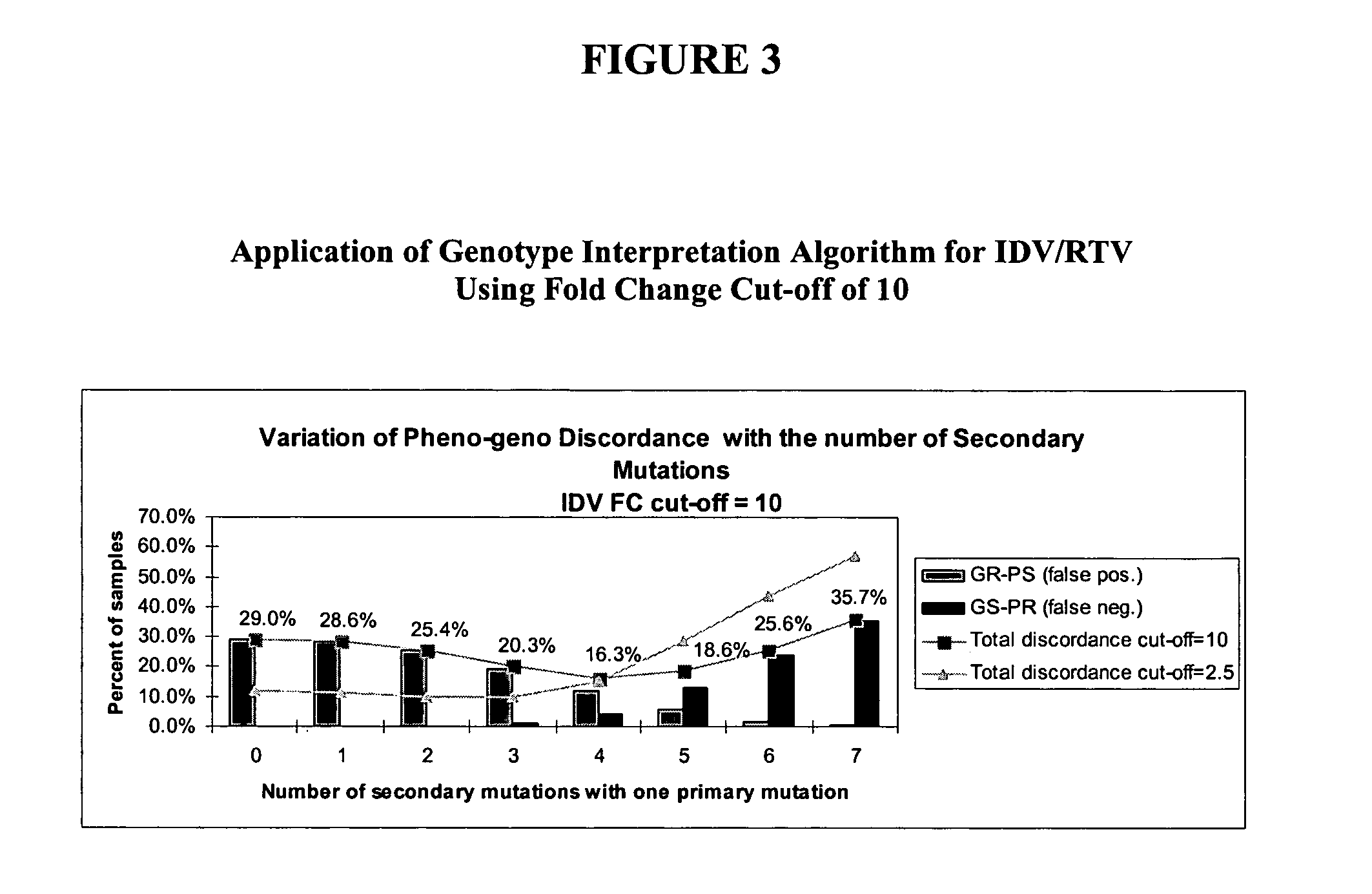Method for determining reduced susceptibility of HIV to protease inhibitor treatment
a protease inhibitor and susceptibility technology, applied in the field of determining the susceptibility of a pathogenic virus to an antiviral compound, can solve the problems of inability to define robust genotypic correlates of reduced susceptibility to idv/rtv therapy, difficult to determine the contribution of drug resistance to drug failure, etc., and achieve the effect of assessing the effectiveness of idv/rtv therapy
- Summary
- Abstract
- Description
- Claims
- Application Information
AI Technical Summary
Benefits of technology
Problems solved by technology
Method used
Image
Examples
example 1
6.1 Example 1
Defining an Optimum Set of Protease Mutations and Numbers of Mutations to be Considered
[0159] A optimized set of protease mutations for IDV / RTV was generated utilizing the HIPAA-compliant database of over 26,000 linked phenotype and genotype results for patient's samples maintained by ViroLogic, Inc. (South San Francisco, Cailf.). Phenotypes and genotypes were determined in the Clinical Laboratory Improvement Amendments-approved ViroLogic clinical reference laboratory. The drug susceptibility phenotypes of HIV-1 isolates from patient plasma samples was determined by the PHENOSENSE™ phenotype HIV assay. This assay is performed by amplifying the PR-RT segment of the pol gene from patient plasma and inserting it into a genomic HIV-1 vector. The vector contains a luciferase reporter gene to monitor recombinant virus infection in cell culture. Results are expressed as the FC in the IC50 for the patient-derived virus compared to that for a reference control virus, NL4-3. Dru...
example 2
6.2 Example 2
Discordance Rates for IDV Resistance Genotvping
[0164] In order to determine optimal rules a dataset (n=8551) was culled from the database described in Example 6.1 in May 2003. This dataset was filtered to exclude wildtype (genotypes with no known mutations associated to resistance to Protease Inhibitors) and redundant samples.
[0165] Genotype interpretation algorithms were developed using PERL scripts, convenient for parsing text files. The programs were run on desktop computers running Microsoft WINDOWS operating system.
[0166] An initial genotyping rule directed towards identifying IDV resistance defined as a phenotypic FC=2.5 was applied to the dataset. This phenotypic FC requirement classifies HIV samples with phenotypic FC of below 2.5 as being PS and those with a phenotypic FC of equal to or greater than 2.5 as being resistant. This rule identified genotypes as resistant (“GR”) if the sample contained one primary mutation among M46I / L / V, G48M / S / V, V82A / F / S / T, I84...
example 4
6.4 Example 4
Identifying IDV / RTV Minimal Discordance
[0172] In order to reduce discordance levels associated with IDV / RTV genotype interpretation, the optimum set of primary and secondary mutations described in Example 1 was introduced into a new set of rules. As in Example 3, an FC cutoff of 10 was required for a sample to be PR. Exemplary results from the reiterative process of running different genotypic interpretation rules against the dataset are shown in FIG. 4.
[0173]FIG. 4 is a three-dimensional graph representing the percentage of discordant samples found with varying the number of secondary mutations from 0 to 7 associated with two primary mutations or varying number of secondary mutation from 3 to 9 associated with one primary mutation.
[0174] It was found that a minimum discordance of 12% is reached for the combined rules of selecting as GRs where the condition is met that one primary and at least six secondary mutations are identified OR two primaries and at least four ...
PUM
| Property | Measurement | Unit |
|---|---|---|
| Fraction | aaaaa | aaaaa |
| Fraction | aaaaa | aaaaa |
| Fraction | aaaaa | aaaaa |
Abstract
Description
Claims
Application Information
 Login to View More
Login to View More - R&D
- Intellectual Property
- Life Sciences
- Materials
- Tech Scout
- Unparalleled Data Quality
- Higher Quality Content
- 60% Fewer Hallucinations
Browse by: Latest US Patents, China's latest patents, Technical Efficacy Thesaurus, Application Domain, Technology Topic, Popular Technical Reports.
© 2025 PatSnap. All rights reserved.Legal|Privacy policy|Modern Slavery Act Transparency Statement|Sitemap|About US| Contact US: help@patsnap.com



